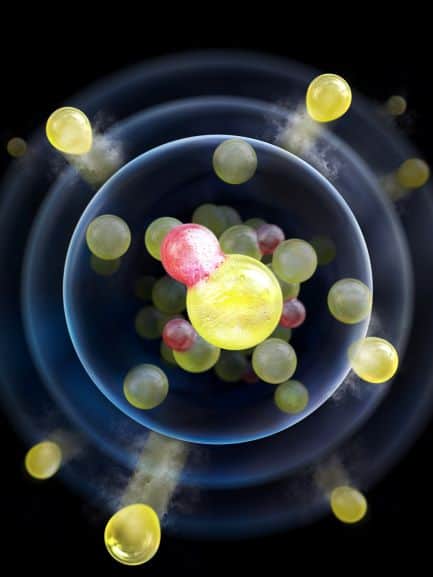Electric fields make a ‘tuning knob’ for solid-state systems
09 Dec 2021 Isabelle Dumé
Researchers at ETH Zurich in Switzerland have developed a new way of controlling the strength of interactions between particles in two-dimensional semiconductors. Their technique, which relies on generating so-called “Feshbach molecules” and adjusting their interactions using an applied electric field, might well become a versatile “tuning knob” to study a broad range of 2D solid-state platforms in the laboratory.
Feshbach resonances allow researchers to tune the interaction strength between quantum entities by bringing them into resonance with a bound state. In the ETH team’s work, these states correspond to an exciton (an electron-hole pair) in one layer of a two-dimensional material bound to a hole in the adjacent layer. When the exciton (which is created by exciting the material with light) and hole overlap in space, the hole in one layer can then tunnel to the other layer and form an interlayer exciton-hole “molecule”, the researchers explain. It is this exciton-hole interaction strength that they tune by applying a varying electric field to the system.
Twisted bilayer system
In the work, the team, led by Atac Imamoglu, Ido Schwartz and Yuya Shimazaki of ETH Zurich’s Institute for Quantum Electronics, studied the 2D semiconductor molybdenum selenide (MoSe2), which belongs to the family of materials known as transition metal dichalcogenides (TMDs). In 2020, Imamoglu and colleagues showed that like its cousin, graphene (a 2D sheet of carbon just one atom thick), two single layers of MoSe2, separated by a single-layer barrier made of hexagonal boron nitride (hBN), can be arranged so that there is a small angle between the layers.
Such a “twisted bilayer” system, also known as a Moiré structure, can host a broad range of exotic and unexpected phenomena such as correlated insulator states and (in the case of graphene) even superconductivity thanks to strong correlations between the electrons in the layers. As well as these purely electronic states, TMDs also host light-matter states, which means they can be studied using optical spectroscopy – something that is not possible for graphene.READ MORE

The researchers say that the electrically tuneable Feshbach resonances they exploited in the current work, which is detailed in Science, could be a generic feature of other bilayer systems that exhibit coherent tunnelling of electrons and holes. They add that being able to tune the binding energy of their Feshbach molecules using electrical fields is very different from the situation in cold-atom systems, where such resonances also exist, but must be controlled using magnetic fields, which are generally more difficult to produce. “The ‘tuning knob’ we have developed might become a versatile tool for a broad range of solid-state platforms based on 2D materials – opening up in turn intriguing perspectives for the wider experimental exploration of quantum many-body systems,” they explain.

Isabelle Dumé is a contributing editor to Physics World
from physicsworld.com 23/12/2021

Δεν υπάρχουν σχόλια:
Δημοσίευση σχολίου